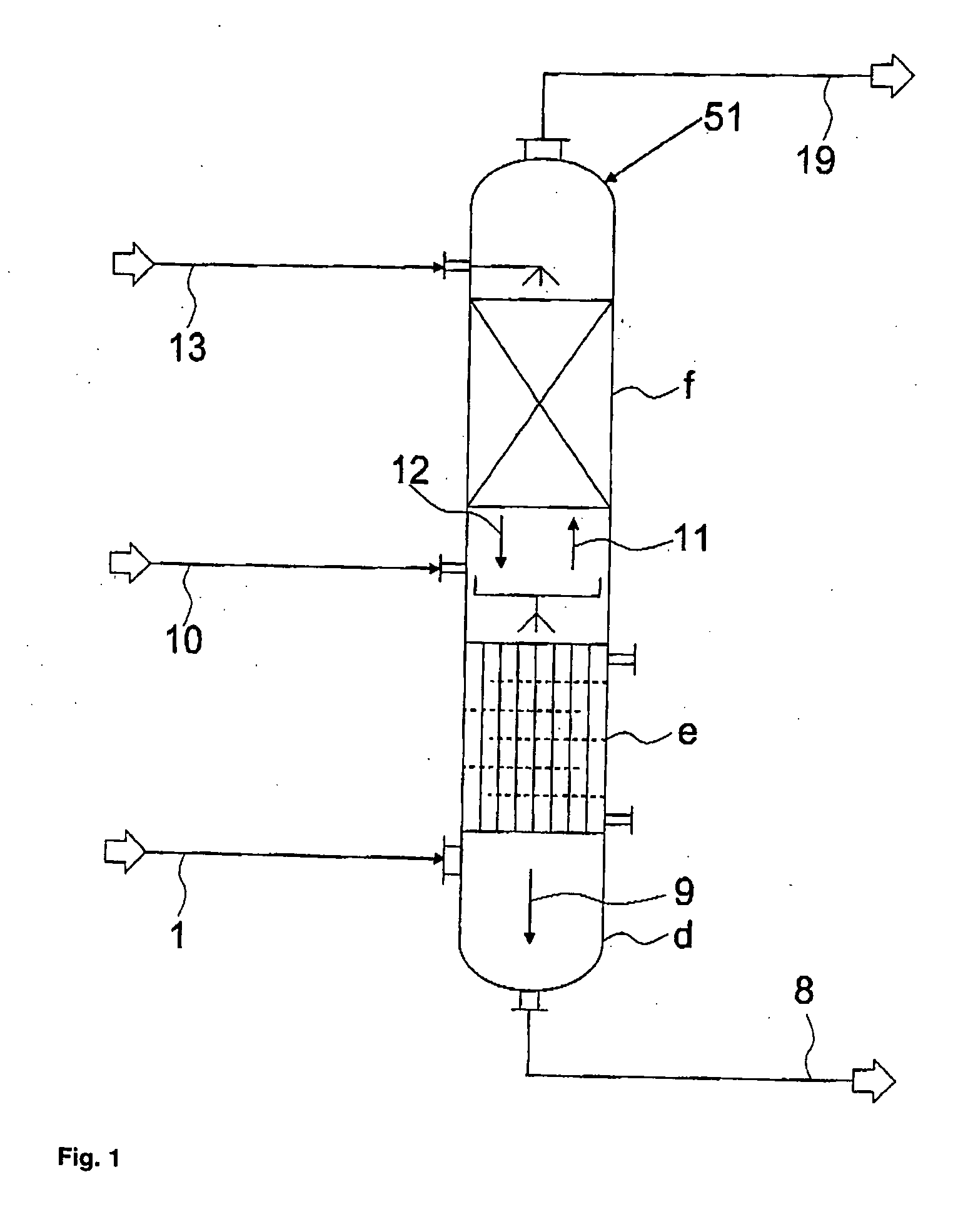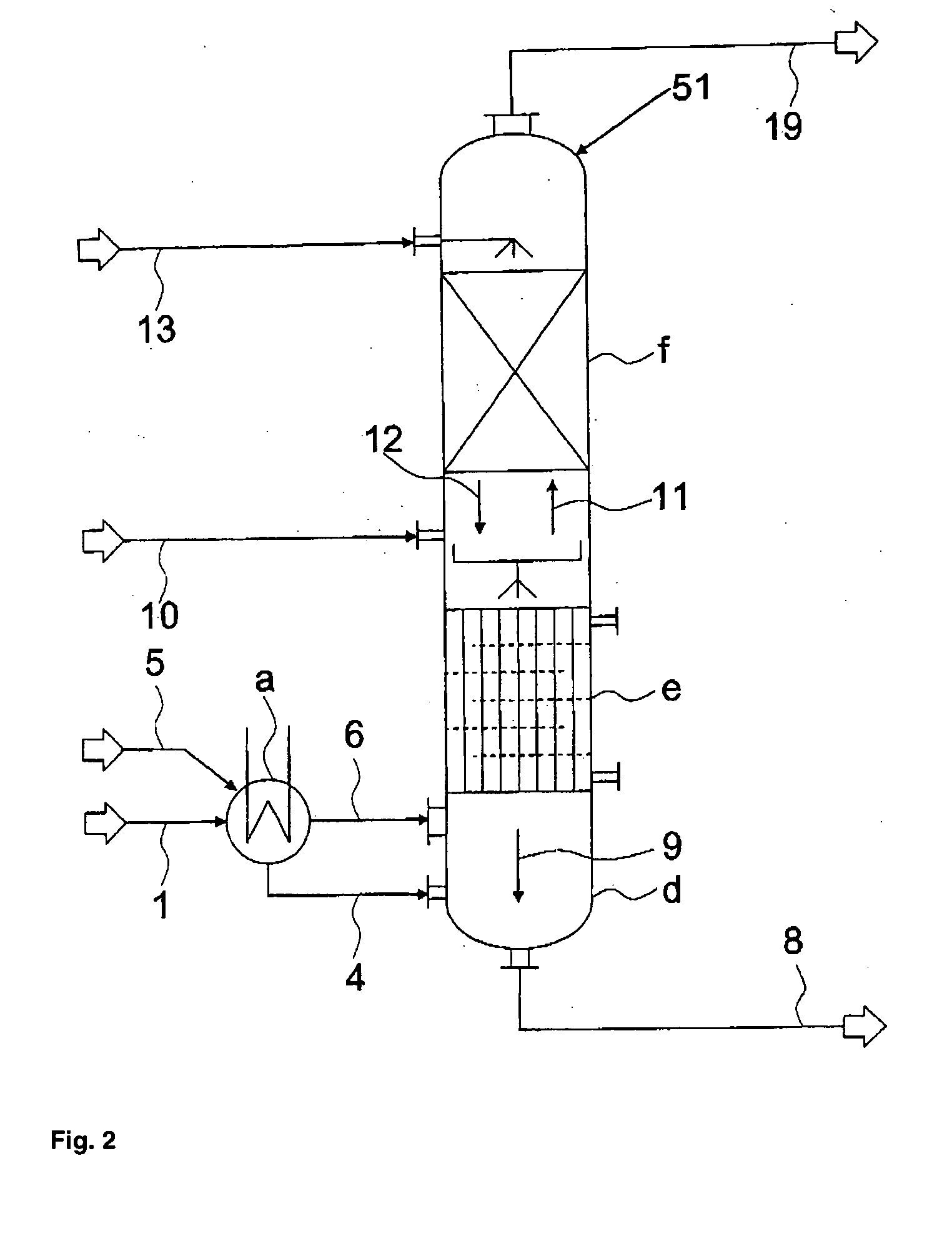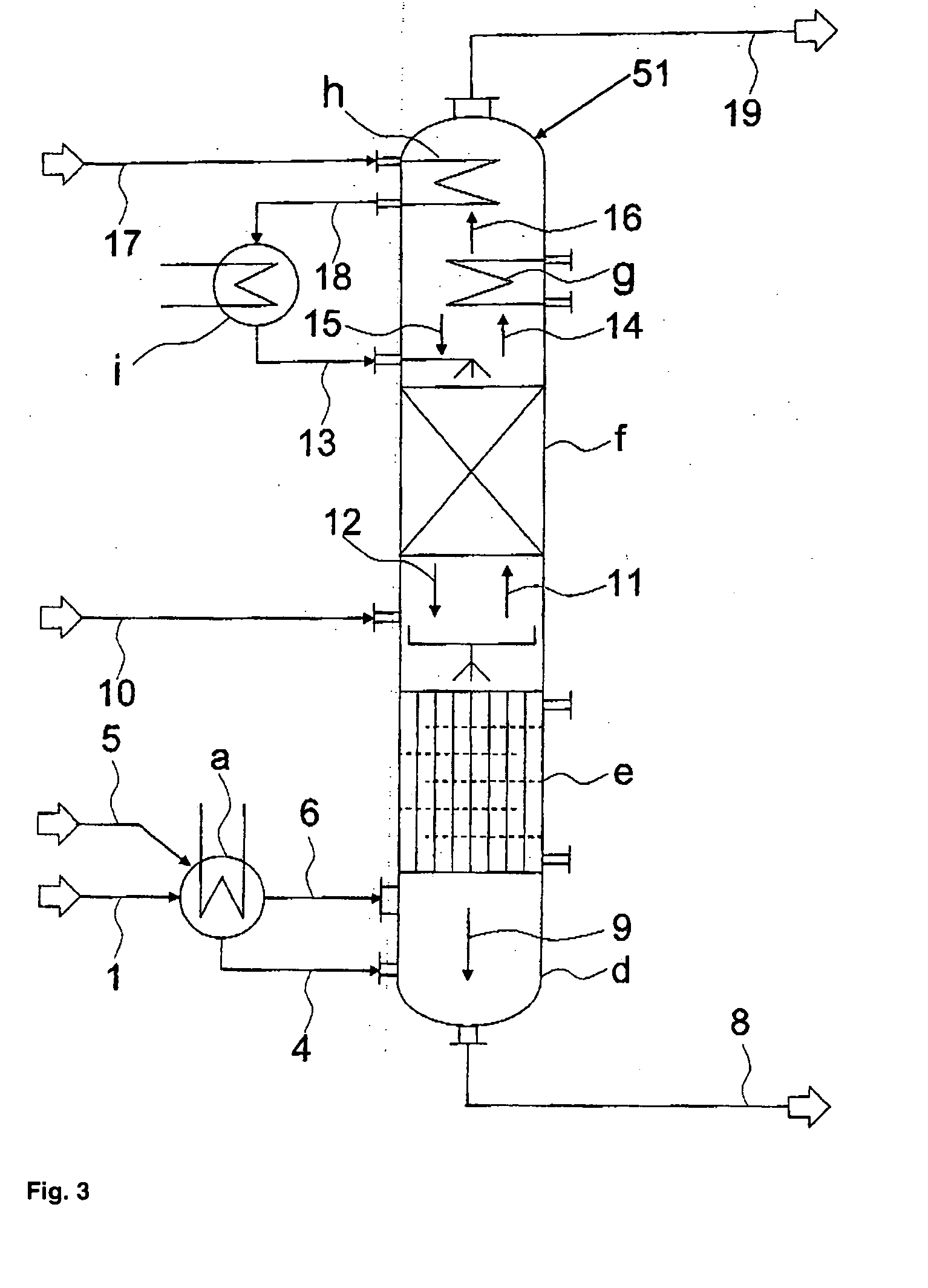Process for the production of isocyanates
a technology of isocyanate and isocyanate solution, which is applied in the preparation of isocyanic acid derivatives, isocyanic acid derivative purification/separation, organic chemistry, etc., can solve the problems of uneconomical phosgene solution for the phosgenation process, and the loss of raw material phosgene, so as to reduce the number of flang
- Summary
- Abstract
- Description
- Claims
- Application Information
AI Technical Summary
Benefits of technology
Problems solved by technology
Method used
Image
Examples
example
[0094] The separation of a stream containing hydrogen chloride, phosgene and optionally solvent, low-boiling compounds and inert substances that normally occurs in the reaction of aliphatic or aromatic amines with phosgene to form the corresponding isocyanates is effected by a three-stage partial condensation, in which in the third stage chlorobenzene is additionally added in co-current, followed by partial isothermal absorption of the phosgene with chlorobenzene in counter-current, followed by an adiabatic absorption of the remaining phosgene with chlorobenzene in counter-current, and finally by a post-condensation of the residual chlorobenzene from the hydrogen chloride stream containing small amounts of phosgene and solvent as illustrated in FIG. 4.
[0095] The phosgene solution formed at the bottom of the absorption column, together with the condensates from the partial condensation, is then partially freed from hydrogen chloride by stripping with a gaseous phosgene stream from t...
PUM
| Property | Measurement | Unit |
|---|---|---|
| temperatures | aaaaa | aaaaa |
| temperatures | aaaaa | aaaaa |
| pressure | aaaaa | aaaaa |
Abstract
Description
Claims
Application Information
 Login to View More
Login to View More - R&D
- Intellectual Property
- Life Sciences
- Materials
- Tech Scout
- Unparalleled Data Quality
- Higher Quality Content
- 60% Fewer Hallucinations
Browse by: Latest US Patents, China's latest patents, Technical Efficacy Thesaurus, Application Domain, Technology Topic, Popular Technical Reports.
© 2025 PatSnap. All rights reserved.Legal|Privacy policy|Modern Slavery Act Transparency Statement|Sitemap|About US| Contact US: help@patsnap.com



